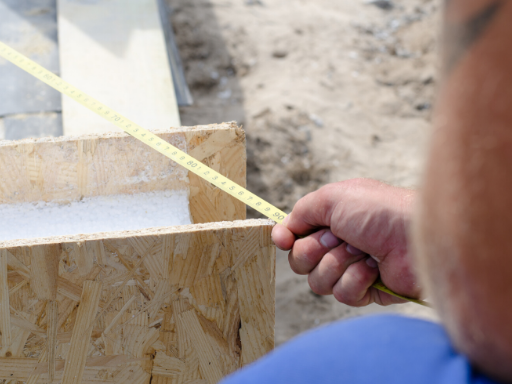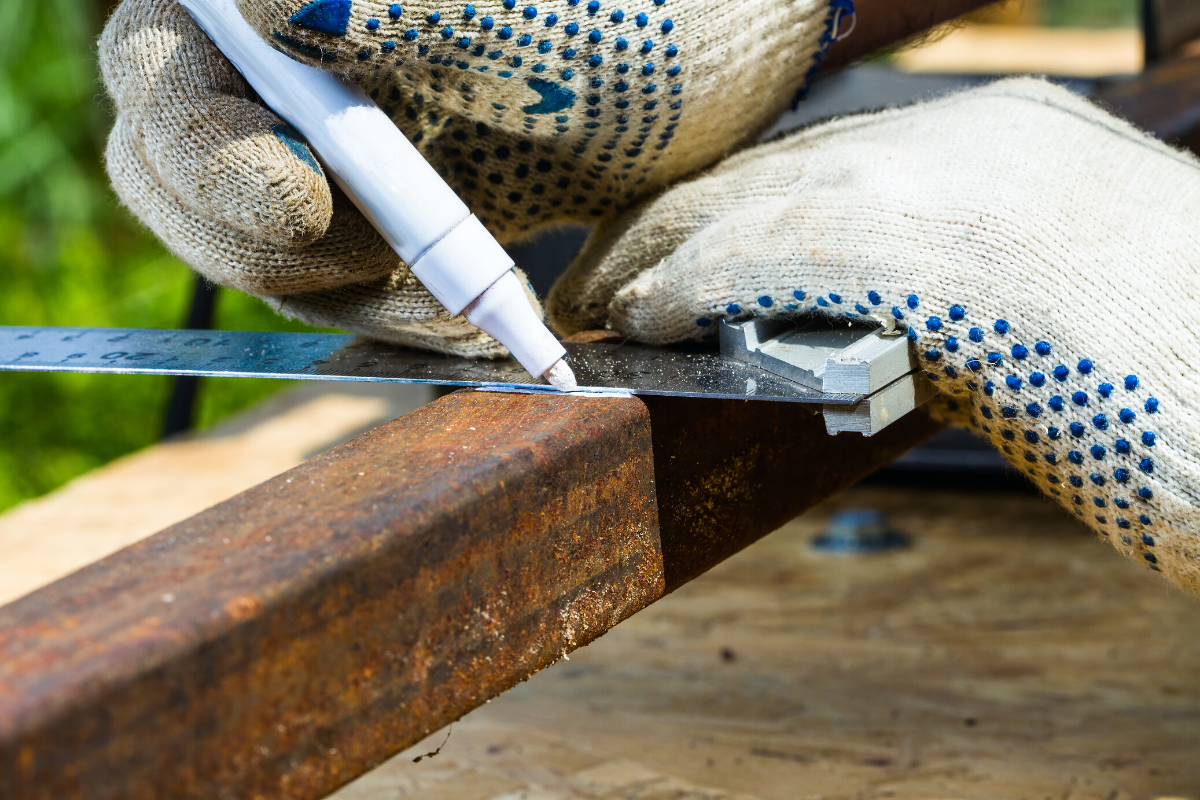When making a structure, you always need to make sure its corners are square. This is because any structure that is not square will prove hard when filling in the materials used. When the corners are square, it makes it durable and easy for any other development that may be required to be done on the structure later.
Therefore, the first stage in setting up this structure is making sure the corners of the posts used to obey the square rule. The degree between one post and the other has to be exactly 90 degrees. Establishing the square rule while digging the holes for the posts may not always be that easy as it may sound. It may require a little skill and knowledge. That’s why this guide is here to guide you on how to go about it. Let’s look into it right away.
Step 1: Setting the Base Post

The first step is to put in order the items you’ll need in setting the square for the structure. These are majorly the posts, tape measures, and marking paint.
Set up the four posts in a rectangular format. Then set one post as the base post at one corner of the structure design. Next, pin this post firmly to the ground as it will mark the foundation of the square.
Using a tape measure, measure on a straight line the length in inches set for the structure. Next, drive the second post as per the desired length and width of your structure. For instance, if the structure’s length is 15 inches, then from the base post measure 15 inches, set the second post at that point.
Step 2: Making the Diagonal Measurement

You now have two stakes on the ground, and whose distance from each other is the desired length of the structure. You need to put a third stake exactly diagonal to the first post you pinned to the ground. Pin the original post as you have to determine the diagonal length of the structure. Here, you have to apply the triangular rule or the Pythagoras theorem. The triangular law states that a2+b2=c2. Here, C is the hypotenuse, and in this case, the diagonal of your structure.
Since you know the width of the structure, use a tape measure. From the second postmark, the width in inches, let’s say 15. Using now the formula, you can calculate the distance this post will be from the first post. This will be arrived at by taking 15 squared multiplied by two and then finding the result’s square root. This should give you the square root of 550, which is 23.45 —using another tape measure, starting from the first post the measure the diagonal length of 23.45 and note where it meets the width.
Step 3: Drive in the Third Post
You have measured the width, as well as the diagonal and the two tape measures used, should meet at a point of intersection. Since the angle between the posts should be 90 degrees, the third post should be precisely at the point where the width and the diagonal intersect. What this means is that mark the point on the ground and take away the tapes. Then using the tool for hitting the posts, drive the third post at the point so formed by the intersection.
Stage 4: Putting the Four Posts into Place
After the above step, you’ll have established the positions for three out of the four posts needed for the structure. Having in mind that whether the structure is square or rectangle and the angle is a right angle between all the posts, establishing the position of the fourth post should be very easy. From the third stake, measure the length using the diagonal length, so calculate. Then from the first stake, also measure the width as you did first. After that, mark the point of intersection. This is the point of your fourth post. At the point established, you can drive the fourth stake of your structure.
You now have marked the four corners of the structure where the posts should be. All you need to do is mark the points then remove the stakes. After this, dig out holes for the posts for your structure. If the process is followed correctly, the corners should be square.
The 3-4-5 Triangular Method
The other method you can use is to use the triangular system. This states that if the length is three units and the width is four units, the diagonal will be five units, and the angle between the sides is always a right angle of 90 degrees.
This applies when you need to square four posts on the ground in that the home base post is placed at the corner marking the starting point where the width and the length are measured from. This corner post marks the point of reference for the whole process of making the structure is square. It is the point that is perpendicular to the diagonal or the hypotenuse.
Using 4×4 stakes to indicate the four posts’ positions for the structure, mark the edges of the 3-4-5 structure as laid out by the intersections of the length, the width, and the hypotenuse. This gives you the three marked posts positions to this far. Then, from the starting point, mark the second diagonal up to the same measurement as the first diagonal length.
Do the same for the width and the length from the second and third stakes, respectively. The three should intersect at a right angle, and this should be square. Mark this point and drive in the fourth stake. You can then dig holes and put the posts in place for your structure.
One concern though, is that you should always start the measurements from a central point for accurate measurements and positioning of the posts. Should these be the only measurements? You may ask yourself.
The truth of the matter is that this is an exponential system. So, you can have double and multiple sets of measurements like 6-4-10 and 30-40-100 units. Each time the units give a square setting for your structure, the bigger the number, the accurate the square.
When measuring the sides, a static point of reference is always necessary to use than random starting points. This not only makes the process more comfortable but also accurate. Therefore, next time you think about constructing a four-sided structure, think of square corners, and with the above techniques, you can’t go wrong. You don’t always have to design a square structure; it can be rectangular, and with equal diagonals, the structure has a square foundation.
You can use the largest square-up triangle to make the measurements accurate for the structure. Also, measure all the distances from a central point or the home base. When making the measurements, always be consistent to make them either from the inside or the outside edges of the structure. For accuracy, don’t interchange when you start from one side and go to measure from the other.
The Equal Diagonals Method
This is another method used to square corner posts for the simple use and application structure. In this method, you mark out the four stakes representing the four corner posts for your structure. Here, you use the distance between the left corner and the corresponding right rare corner. Measure this distance and mark on the ground the positions for the two opposite posts.
Then, taking the distance between the right and the left rear stakes measure and note the distance. The two diagonal distances should be the same. Using one diagonal as the base, adjust the other diagonal to match and equal this distance. If the two distances are the same, the corners are square. You can mark the exact positions and dig up the holes then put in the posts for the structure.
However, you should be careful not to make a stretched rectangle that results in a trapezoid which might not have square corners. Measure and adjust the length of the diagonals to be the same. At the same time, the opposite sides should also be equal and parallel. If these aspects are observed, the four corners of the structure are square.
Making the corners of a structure design square should not be that hard. You can use several methods to make them square and result in smooth construction or assemblage as it makes it easy to fill in the materials or erect the walls.
No matter which method you apply, always make sure the diagonals are equal. This makes the process of establishing a square quickly.
Finally, use a central point to take measurements and adjustments while establishing the square of the corners for your structure. Also, measure from the inside or outside edges of the sides of the structure but not both. This maintains the accuracy of measurements.

